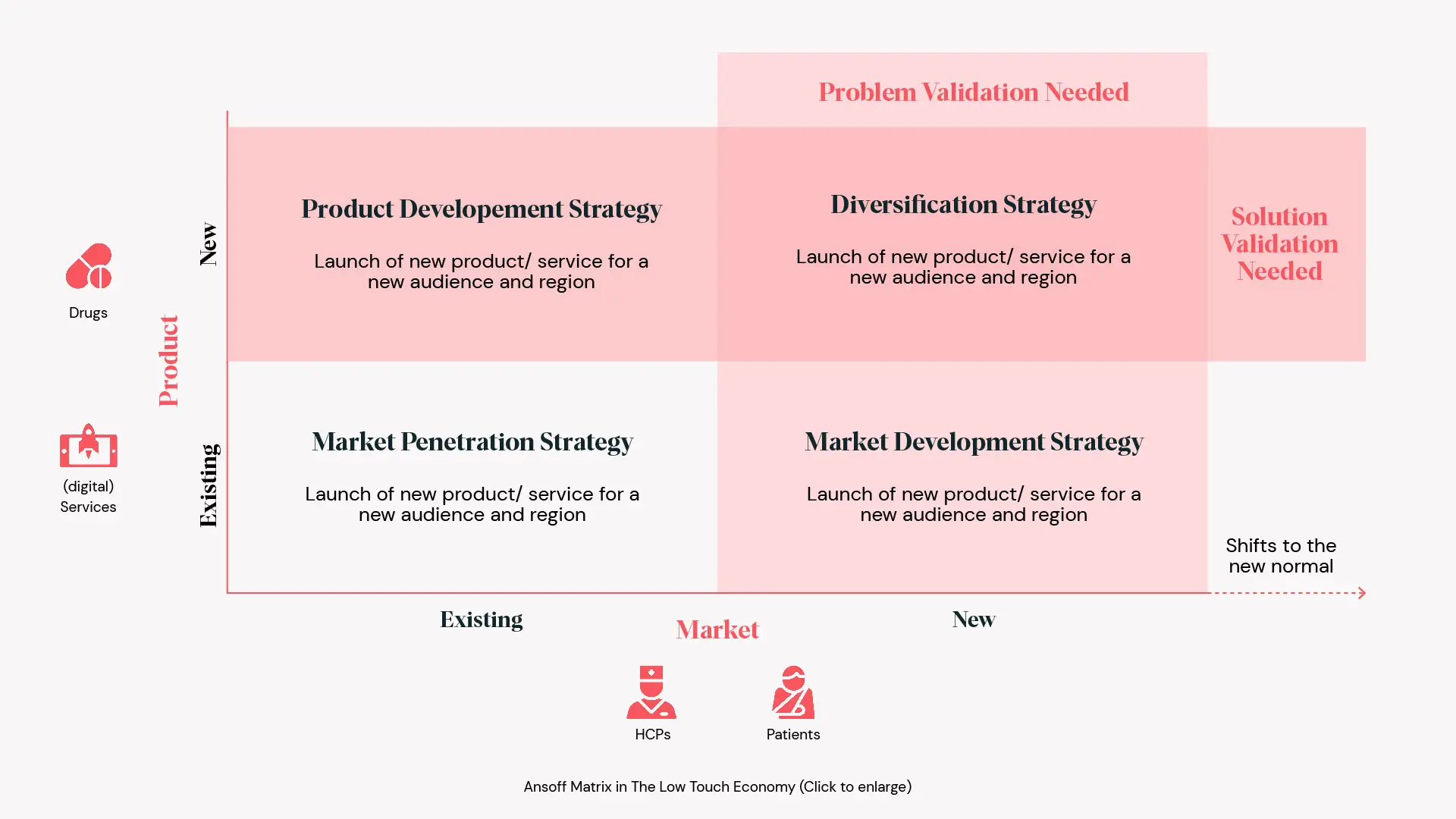Through the lens of a pharmaceutical product launch, patients and healthcare professionals are faced with new challenges and will be looking to overcome them with differentiated solutions. For instance, consider the recent increased willingness for patients to participate in telemedicine, share their personal health data, and enroll in digital pharmacies. Designing solutions without understanding the emerging behaviors and expectations will make it difficult to effectively solve your customers’ problems.
What does that mean for you? Before developing a launch excellence strategy, you need to re-evaluate the priorities of your key stakeholders with empathy research, archetype design, and patient/customer journey mapping. And don’t forget about the shifting regional requirements and policies that will also be reconstructed in the Low Touch Economy. Doing so will put you on the right path to becoming a market shaper, identifying the truths about the ecosystems you are designing for and adapting your strategy to unlock new value.
This process becomes increasingly complicated in a Product Development Strategy when launching a new drug or digital health solution. It is more critical than ever to do solution validation to confirm that your product effectively solves patient/HCP pain points within the new context. Building and testing prototypes in-region and co-creating with the target audience will allow you to build an ideal future-state customer journey. A Diversification Strategy brings together the need to both validate the new market and customer challenges as well as the ability for the proposed solutions to solve the uncovered, unmet needs.
Conducting problem and solution validation will allow you to generate deep insights to incorporate into your customer journeys. A differentiated customer experience is the key to launch excellence in pharma – a strong brand and an innovative drug can no longer guarantee market success. It is time to go beyond solving clinical needs by uncovering the emotional and behavior needs of patients and HCPs of specific regions and integrating them into your strategy.
Differentiated customers journeys will lead to increased customer satisfaction, adoption, and adherence. Revenue and market share will follow.
When crafting a global launch strategy, start by building the foundation centrally. This foundation should be composed of overarching design principles that you identified during problem validation. For example, ‘keep my information accessible and approachable’ may be a common theme across your research that you turn into a design principle for future solutions.
After the foundation has been established it can be shared into the regional teams in order to co-create the right tailored approach as required by each market. By doing so, you will be able to leverage local knowledge and access to create region-specific differentiated customer journeys.




